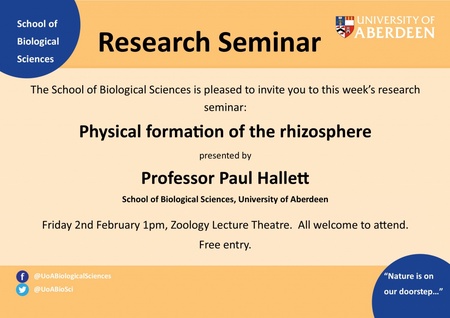This is a past event
Professor Paul Hallett from the University of Aberdeen will talk about his work on understanding how biological and chemical processes interact with soil physical structure and transport properties as part of the School of Biological Sciences Friday seminar series.
The rhizosphere is the narrow region of soil that is directly influenced by root secretions and associated soil microorganisms. The rhizosphere contains many bacteria and other microorganisms that feed on sloughed-off plant cells, termed rhizodeposition, and the proteins and sugars released by roots. This symbiosis leads to more complex interactions, influencing plant growth and competition for resources. Much of the nutrient cycling and disease suppression needed by plants occurs immediately adjacent to roots due to root exudants and communities of microorganisms. The plant-soil feedback loop and other physical factors are important selective pressures for the communities and growth in the rhizosphere.
The Hallett lab use approaches from soil physics, materials science and engineering to quantify mechanical and hydrological processes that underlie the physical engineering of soil by biology. This knowledge is applied to investigate the impact of root traits on soil physical behaviour, the sustainability of agricultural production processes and the resilience of soil to external stresses.
Professor Paul Hallett is a Professor of Soil Science within the School of Biological Sciences at the University of Aberdeen.
- Speaker
- Professor Paul Hallett
- Venue
- Zoology Lecture Theatre
- Contact
-
No booking required - All Welcome.

